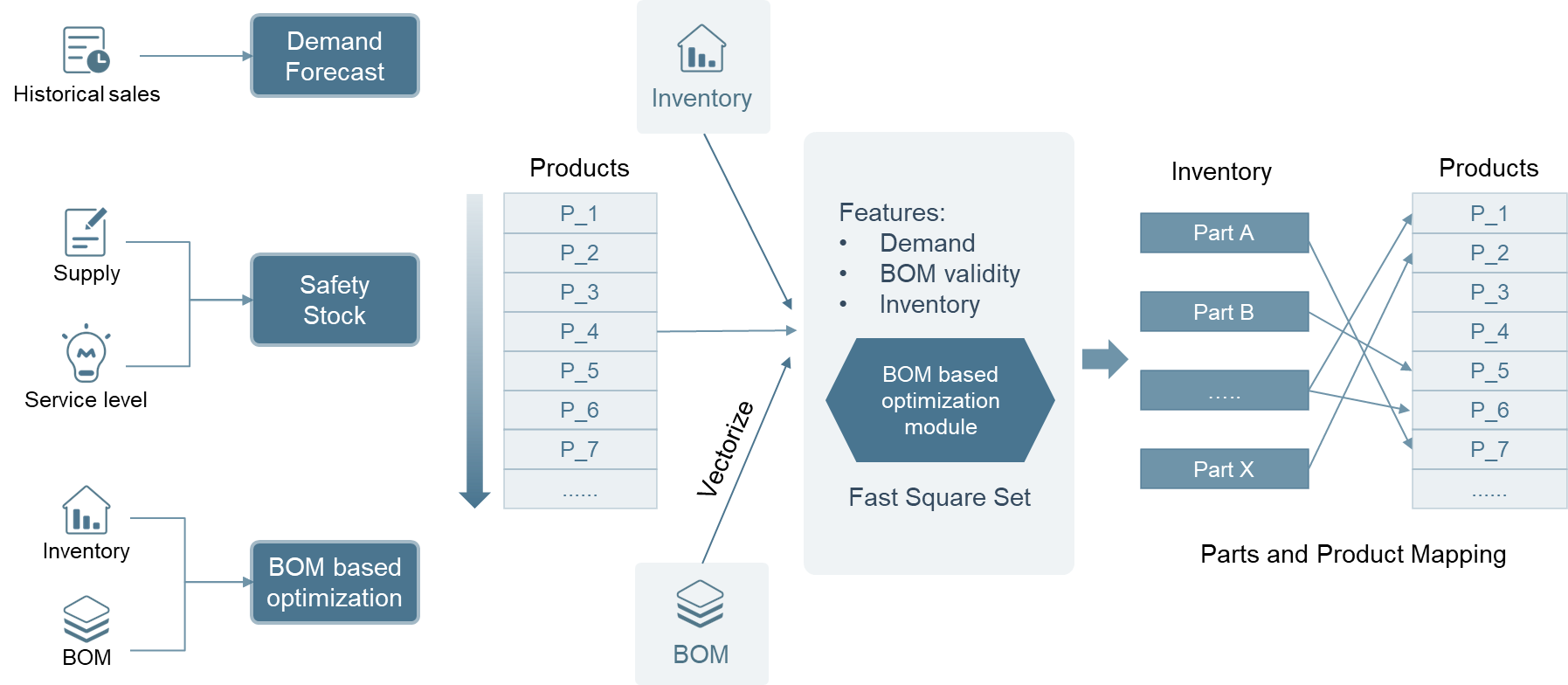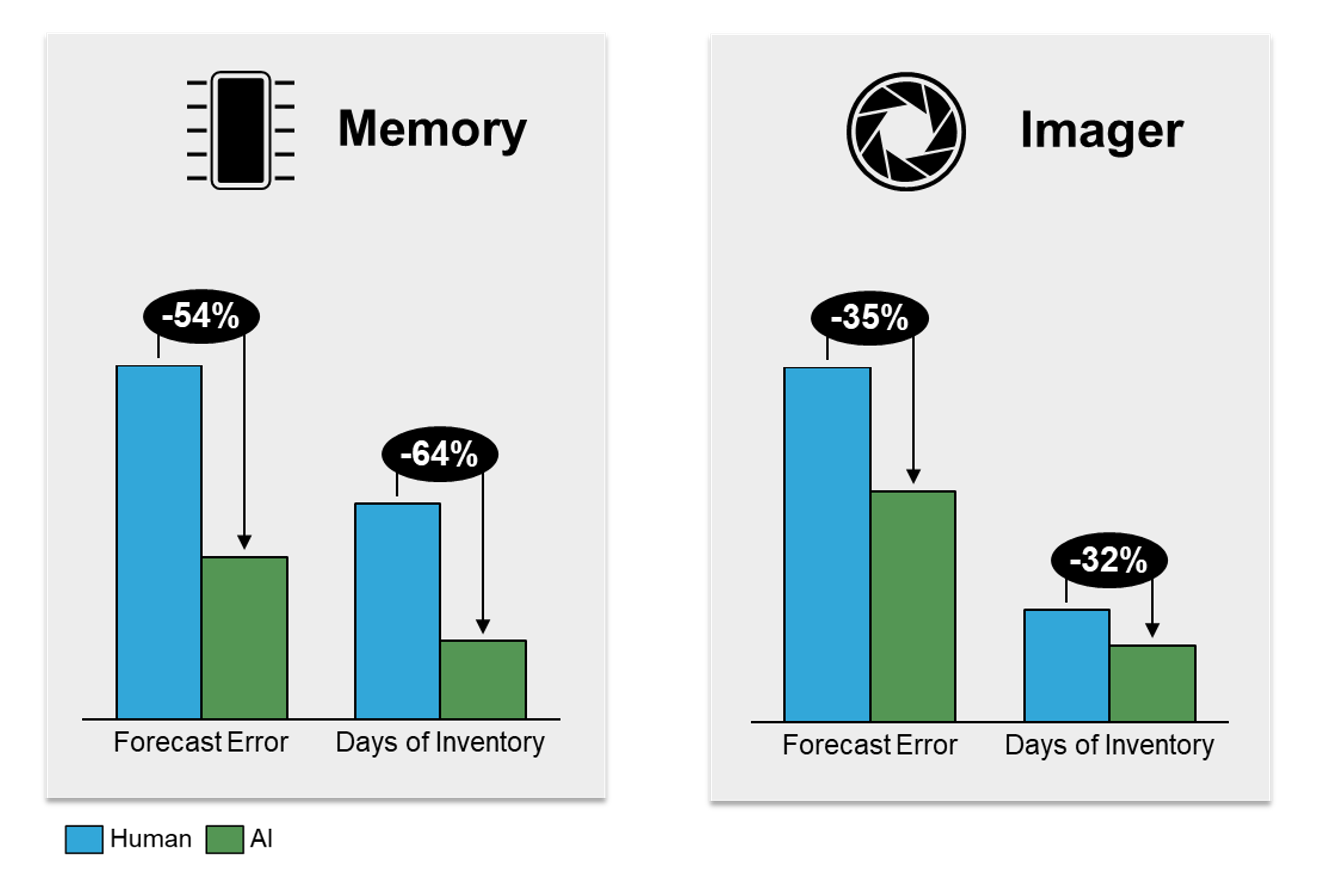Authors
Published
6 Nov 2020Form Number
LP1387PDF size
7 pages, 626 KBAbstract
Lenovo has partnered with SAP to develop a solution based on Artificial Intelligence and Machine Learning technologies to optimize manufacturing inventory management, this solution is automated and creates a parameterized replenishment policy to optimally balance between inventory levels and their cost.
Improve Efficiencies - Maximize your Gain
For manufacturers, inventory management is as important as producing the goods themselves since the production process is at the mercy of an accurate demand forecast and always having the right parts available at the right time.
Preventing the manufacturing process from stopping due to supply shortages is typically prioritized far higher than optimizing inventory to avoid the costs associated with halting production in a tightly synchronized supply chain.
This in turn leads to manufacturers taking in far too many parts as safety stock, increasing the number of days the parts remain in inventory before they are actually used as well as realizing significantly higher storage and administration costs.
It is not necessarily the number of unneeded excess parts, but in particular the number of days it takes to turn the parts into a sold product (DOI = Days of Inventory) that denotes the efficiency of a company to handle its inventory.
Balance Future Demand and Safety Stock
As it is impossible to exactly predict future demand, there is always the need for safety stock. Nevertheless, improving the demand forecast as well as improving the calculation for safety stock can drive huge gains for the manufacturers and the supply chain industry.
The result is an optimized balance between always having enough supply to avoid halting production and reducing safety stock as much as possible to reduce the DOI count.
In todays' world where manufacturers often operate in many different countries, have several manufacturing sites in different geographies and work with hundreds or even thousands of suppliers it is paramount to know at any given time what is going on in their production process to optimally manage their inventory as well as their supply chain. In order to stay current in the production process and to be able to manage inventory and supply chain, manufacturers and supply chain companies need to process enormous amounts of data coming from a variety of sources and systems.
Artificial Intelligence and Machine Learning
At Lenovo we are designing, engineering and building the world’s most complete portfolio of smart devices and IT infrastructure. And we are addressing this challenge with automation based on Artificial Intelligence and Machine Learning technologies. We have developed an inventory optimization solution that is automated and creates a parameterized replenishment policy to optimally balance between inventory levels and their cost.
Optimize the Bills of Material
The Lenovo Optimization Solution even addresses a third business challenge for manufacturers: when different organizations within a company are responsible for the individual bills of material (BOM) for their product sets, the parts purchasing process is often not synchronized such that equal or very similar parts are not standardized on a single part that can be bought with economies of scale. The Lenovo solution not only optimizes the demand forecast and the safety stock (minimize DOI count), but it also optimizes the bills of material for the products under consideration.
Figure 1. Days of Inventory Solution Framework
As mentioned before, Lenovo is faced with a complex manufacturing and supply chain environment that comes with a large variety of data sources and data formats. As Artificial Intelligence and Machine Learning will only be brought to their full potential when applied to all the data that is required, the Lenovo automation solution first needs to enable integral access to these data sources and data formats. A data management and orchestration platform is needed that allows for the application of Artificial Intelligence and Machine Learning processing.
SAP Data Intelligence
SAP Data Intelligence is exactly this - an enterprise-ready solution that provides governance and orchestration for data refinement and enrichment, using pipelining for many complex data processing operations like Artificial Intelligence and Machine Learning.
Figure 2. Lenovo Optimization Solution for Manufacturing Inventory built on SAP Data Intelligence
Long term technology evaluation results show that this solution reduces both the demand forecast error and the DOI number in the high double digit percent range. In combination with the BOM based optimization this solution drives huge gains for Lenovo and helps the company to take their manufacturing and supply chain operation to the next level.
Figure 3. Long term technology evaluation results for selected parts
If you are interested in learning more about this solution and how it can benefit you, watch the video on YouTube, or contact us at sapsolutions@lenovo.com
Trademarks
Lenovo and the Lenovo logo are trademarks or registered trademarks of Lenovo in the United States, other countries, or both. A current list of Lenovo trademarks is available on the Web at https://www.lenovo.com/us/en/legal/copytrade/.
The following terms are trademarks of Lenovo in the United States, other countries, or both:
Lenovo®
Other company, product, or service names may be trademarks or service marks of others.
Configure and Buy
Full Change History
Course Detail
Employees Only Content
The content in this document with a is only visible to employees who are logged in. Logon using your Lenovo ITcode and password via Lenovo single-signon (SSO).
The author of the document has determined that this content is classified as Lenovo Internal and should not be normally be made available to people who are not employees or contractors. This includes partners, customers, and competitors. The reasons may vary and you should reach out to the authors of the document for clarification, if needed. Be cautious about sharing this content with others as it may contain sensitive information.
Any visitor to the Lenovo Press web site who is not logged on will not be able to see this employee-only content. This content is excluded from search engine indexes and will not appear in any search results.
For all users, including logged-in employees, this employee-only content does not appear in the PDF version of this document.
This functionality is cookie based. The web site will normally remember your login state between browser sessions, however, if you clear cookies at the end of a session or work in an Incognito/Private browser window, then you will need to log in each time.
If you have any questions about this feature of the Lenovo Press web, please email David Watts at dwatts@lenovo.com.



